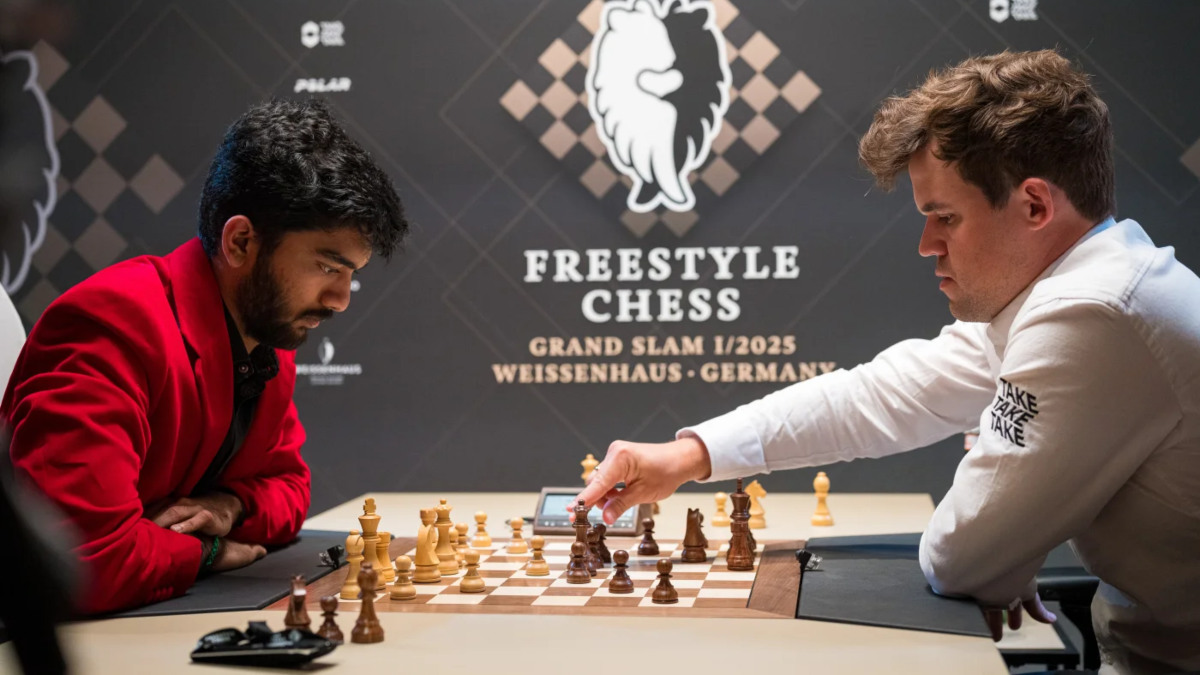The Freestyle Chess Grand Slam Tour has returned to action after an absence of nearly three months, with the fourth leg getting underway in Las Vegas on Wednesday. And American leg hasn’t been short of drama either, with world No 1 and current Tour leader Magnus Carlsen failing to advance to the knockouts after finishing fifth in his group, much to the delight of some of his rivals .
With the Grand Slam Tour still going through its inaugural edition, there might still be those who aren’t fully familiar with the unique format of Freestyle Chess and what sets this tour – co-founded by Carlsen and German entrepreneur Jan Henric Buettner – apart from other chess tournaments.
How is Freestyle Chess different from other forms of the game?
What sets Freestyle Chess apart from other forms of the board game is its unpredictability, and the fact that one cannot really prepare for it the way they do for other forms of the game, including the traditional Classical chess. This is due to the fact that the back pieces on the board are randomly arranged with the pawns lining up on the front row the way they do in other formats.
There are a total of 960 variations for the back pieces from the first to eighth ranks, which is why it’s also known as Chess960. It also goes by the name ‘Fischer Random’ after its inventor, American chess icon Bobby Fischer. And black pieces mirror that of white with two exceptions – the King has to be placed between two rooks and the bishops have to be placed on opposite-coloured squares, which is a basic rule for that piece.
Thanks to the randomisation of back pieces, players are forced to think on the fly instead of going with memorised openings. The board layout is unveiled roughly 15 minutes before start of play, giving players precious few minutes to come up with a strategy beforehand.
Indian Grandmaster D Gukesh is among chess’s elite, especially after becoming the youngest winner of the Chess World Championship and the Candidates Tournament and also starring in India’s golden sweep at the Chess Olympiad last year. But when it came to Freestyle Chess, the reigning Classical world champion struggled to make an impact in the Weissenhaus and Paris legs of the Grand Slam Tour and opted out of the fourth leg in Las Vegas.
“I think the most challenging part for me in Freestyle Chess is that everybody can calculate and see tactics. But evaluating positions correctly, that is the most challenging, at least for me. Because a lot of positions and ideas are similar to standard chess but not exactly similar. And something which we think is good might not actually be good. Our intuition is simply not always correct in Freestyle,” Gukesh had revealed in a chat with Chess.com during the Paris Grand Slam.
)